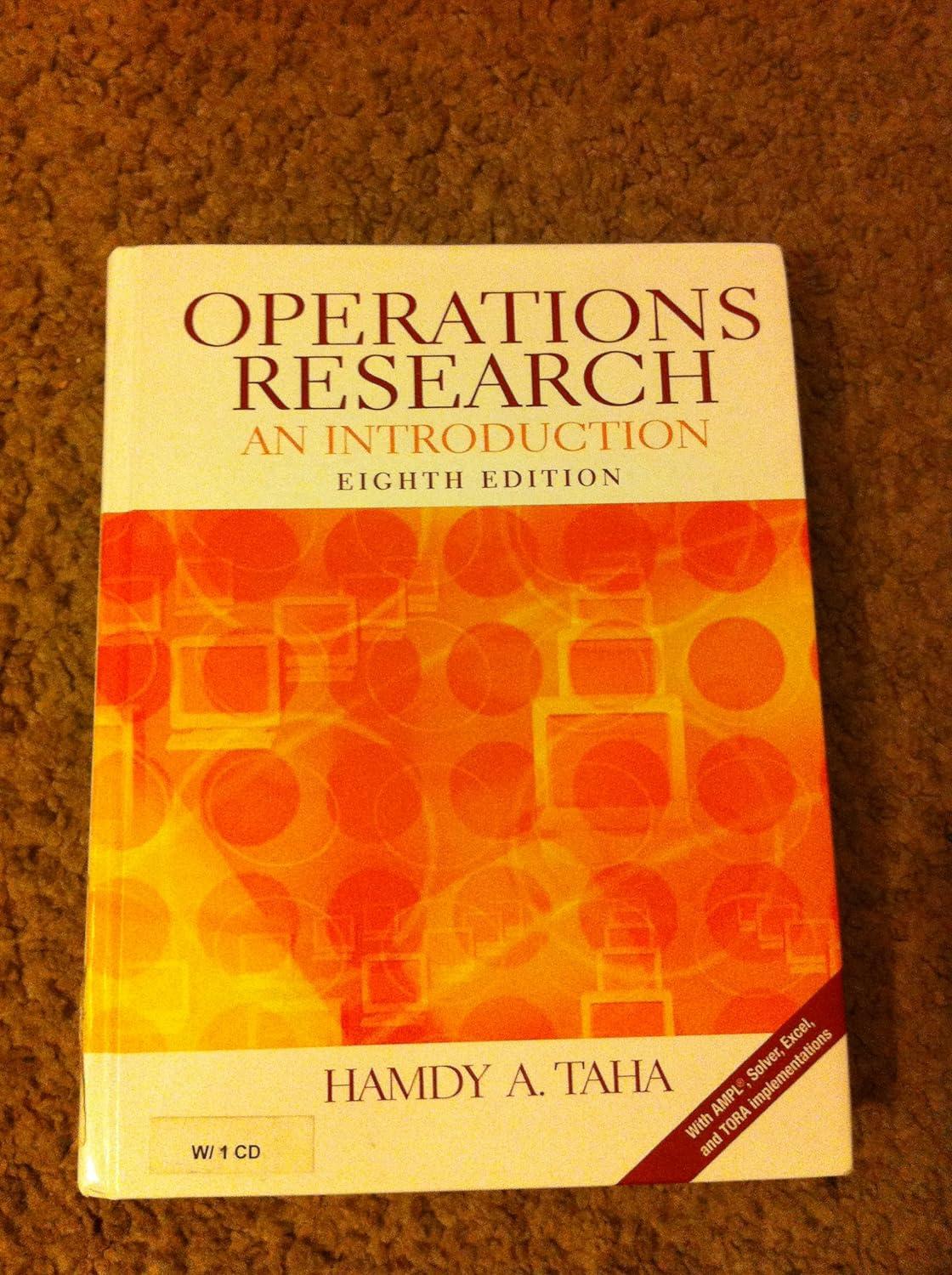4. Consider the following set of constraints: -2XI + 3X2 = 3 (1) 4Xl + 5X2 ;:::...
Question:
4. Consider the following set of constraints:
-2XI + 3X2 = 3 (1)
4Xl + 5X2 ;::: 10 (2)
Xl + 2X2:::::: 5 (3)
6Xl+7x2~3 (4)
4XI + 8X2 ;::: 5 (5)
Xl + X2 + X3 = 4 Xl + 4x2 + X4 = 8 Solve the problem for each of the following objective functions:
(a) Maximize z = 2Xl + 3X2 - 5X3'
(b) Minimize z = 2XI + 3X2 - 5x3-
(c) Maximize z = Xl + 2X2 + X3-
(d) Minimize z = 4Xl - 8X2 + 3x3'
Consider the problem subject to For each of the following problems, develop the z-row after substituting out the artificial variables:
(a) Maximize z = 5xI + 6X2 subject to (1), (3), and (4).
(b) Maximizez = 2XI - 7x2subject to (1),(2), (4), and (5).
(c) Minimize z = 3Xl + 6X2 subject to (3), (4), and (5).
(d) Minimize z = 4Xl + 6X2 subject to (1), (2), and (5).
(e) Minimize z = 3XI + 2X2 subject to (1) and (5).
Consider the following set of constraints:
Xl + X2 + x 3 = 7 2x1 - 5x2 + xJ ;::: 10 5.
f;:
!f
~I
,
•fr;
r•~
f. *6.
I'[
~
~
"~
~
~
f:
~~
The problem shows that X3 and X4 can play the role of slacks for the two equations. They differ from slacks in that they have nonzero coefficients in the objective function. We can use X3 and X4 as starting variable, but, as in the case of artificial variables, they must be substituted out in the objective function before the simplex iterations are carried out.
Solve the problem with X3 and X4 as the starting basic variables and without using any artificial variables.
108 Chapter 3 The Simplex Method and Sensitivity Analysis
Step by Step Answer:






